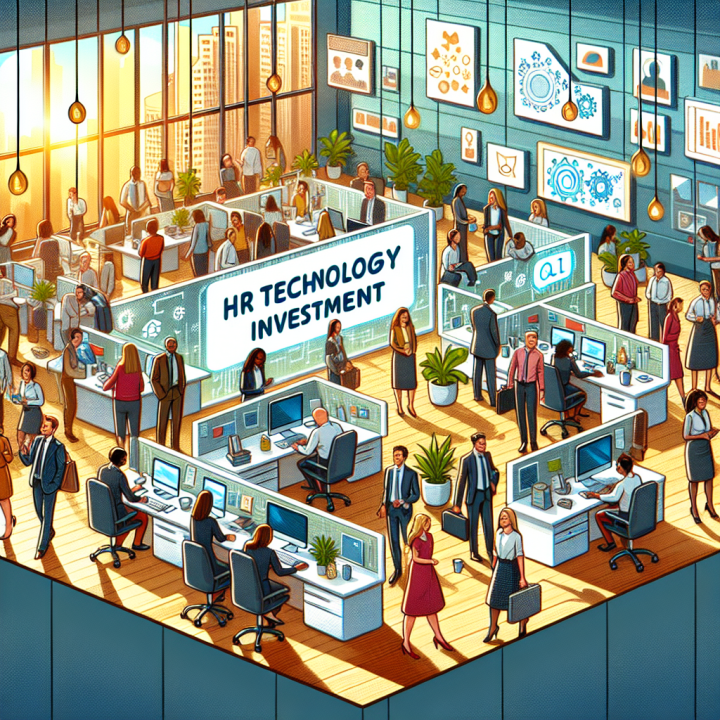Get in touch

Investing in HR technology can be a game-changer, but only if it's done right. Many of the conversations I have with clients, there always seems to be either a nagging doubt, or worse, despair at why their HR tech isn't working and not yielding the value that was presumed, and then not really knowing where to start to try and remedy it.
With so many options on the market, competing internal priorities and varying degrees of being 'transformation ready', it can be easy to get overwhelmed and make mistakes that can cost time and money. Here are some areas to target steps to ensure you’re making the most of your HR tech investment.
In the first of two articles we look at the Set up for Success and Utilising what you have bought.

Go Live is Just the Start
The first thing to point out is that transformation is now a constant and not a point in time at Go Live. Therefore, the investment story is before, during and after the implementation. The muscle memory you build during the implementation will create the blueprint for how you operate after. So getting it right during an implementation is key or reversing that mode of operating and behaviour is much more difficult and costly.
The technology investment is only one part of the equation. It is crucial to ensure that your organisation is prepared to continuously evolve and adapt to leverage the full benefits of your new investment.
Areas to consider:
- Operating model - An effective operating model is essential for maximising the benefits of your HR technology investment. This model acts as the blueprint for how your organisation functions and should align seamlessly with your new tech capabilities. Regularly reviewing and updating your operating model will help create a sustainable, agile framework that not only supports your current needs but also scales with future organisational growth.
- Assess your ways of working - Current processes and workflows to identify any bottlenecks or inefficiencies within your team as well as those teams you are going to need to work with closely, such as the IT function.
- Skills and competencies - Your HR team needs to be able to take ownership from day 1 to ensure they are adequately equipped and skilled to operate the new technology effectively. It's also important to establish clear governance structures and roles, so everyone understands their responsibilities in this new tech-enabled environment.
- Culture of continuous improvement - This means fostering and, equipping your team with the necessary skills, and re-evaluating your processes regularly. Be ready to refine and enhance your processes to make the most of your technology investment over time.
Are you Utilising What You’ve Bought?

Once implemented, you want to use what you have bought, right? Sounds obvious doesn't it? But all too often, the potential capability that most HR tech has relative to what is being deployed can be poles apart. Many businesses purchase advanced systems but only use a fraction of their capabilities and can sometimes look more like a glorified HR database.
Areas to consider:
- Adopt not adapt - Avoid customising the tech to fit your business processes. This starts during implementation but the effects are most acutely felt after go live. By adopting you can consume new functionality from your tech provider, quicker and with less rework and thus enhancing the value you can achieve at pace.
- Understand the vendor roadmap and what you have bought - Make sure you are aware of the direction your HR tech vendor is going in, as this can impact how you utilise their technology. By understanding their future plans, you can anticipate changes and make sure you stay ahead of the curve.
- Understand your HR ecosystem - Assess your current technology ecosystem and identify any gaps or overlaps. This will help you understand where your HR tech could be better integrated and streamline processes and data between systems. You can then make informed decisions how to get value from your investment or when you might need to change direction, if it is no longer fit for purpose.
- Upgrades and updates are a must - Don't put off upgrading your HR tech, as this can lead to missing out on new features and functionality that could greatly benefit your business. Keep up-to-date with the latest versions to ensure you are getting the most value from your investment. Being set up for success from the outset is key, as mostly not being able to consume the changes is where the problems start.
Takeaways
Maximising your HR tech investment requires more than just a financial commitment and it isn't easy but it can be done. By putting in place:
- The mindset of continual change within your teams- change is now constant.
- An operating model and ways of working once you are out of the implementation phase - a transition between phases is key to support the change as this will be the vehicle that continues to drive change and help to grow your investment.
- Having a clear understanding of what you have bought - knowing what and how to utilise what you have bought to the potential that supports your business and ecosystem is key. Understanding where the solution is going next to support growth and remembering the hard work can be adopting the process and not adapting. If not it will become a version of what you had and wanted to move away from leaving you with buyers remorse.
Next time we'll look at Vendor engagement and Leadership.
Need help with taking your HR tech investment to the next level?
Get in contact to see how we can help you make the most of your technology investment.

